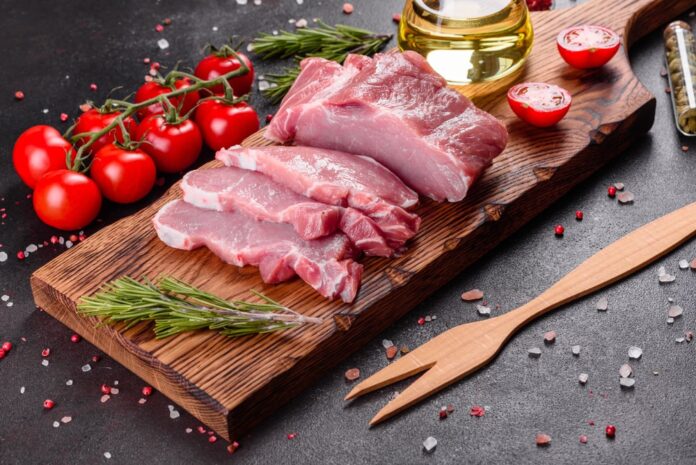
Welcome, readers, to this enticing guide, where we’ll delve deep into the art of identifying and choosing superior pork. Buying meat can often seem like a complicated task, but with the right knowledge and keen observation, one can elevate the experience, ensuring top-notch quality in every purchase. This post aims to transform you into a seasoned expert in this field, arming you with the tools and information necessary for discerning the best of the best.
Visual Clues for Freshness
In the quest for prime duroc pork, one’s eyes are the initial gatekeepers. Freshness can often be gauged by observing the surface of the meat. High-quality duroc pork exhibits a sheen, indicative of its freshness. If the surface is dull or cloudy, the meat is likely past its prime. As you scrutinize the meat, also take note of any discolorations. Patches of grey, brown, or green, are alarming signals, suggesting that the meat might have started to spoil.
Another important visual cue is the liquid on the pork. Ideally, there shouldn’t be an excessive amount of fluid in the package. If there is, it could be a sign that the meat has been frozen and thawed multiple times, which is a big no-no in terms of freshness and quality. On the other hand, the presence of a little moisture is normal, especially if the meat has been vacuum-sealed.
Evaluating Marbling and Fat Content
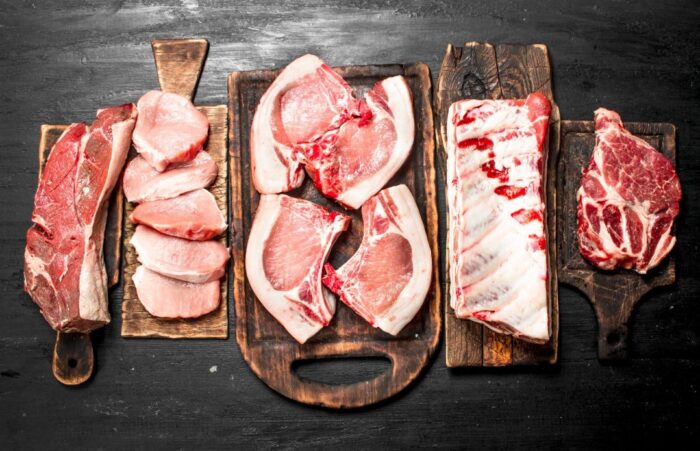
When you’re selecting pork, a major factor to consider is the marbling or intramuscular fat. This refers to the small streaks or flecks of fat that are dispersed throughout the muscle. Quality meats should possess a moderate degree of marbling. Why? This intramuscular fat melts during cooking, which contributes significantly to the meat’s flavor, juiciness, and tenderness.
Fat content goes beyond marbling. Along with it, a rim of fat should encase the cut, usually on one side. This external fat plays a vital role when it comes to cooking, providing a rich, succulent taste. However, this fat must be white or cream-colored, with no discoloration, indicating a healthy, well-raised pig. The thickness should be moderate—not too thin, and not overly thick.
Examining Color and Texture
Color is another crucial determinant in selecting superior pork. The color should lean towards a blush or rosy pink, which typically signifies a healthy animal and good meat quality. On the contrary, pork that is pale or excessively dark might not provide the desired flavor and can potentially indicate inferior quality or poor handling during processing.
Let’s not overlook texture. When assessing pork, the texture should be firm, yet not overly hard. An excessively soft or mushy texture often suggests poor quality. Another telltale sign is the grain of the meat. If the grain is fine and tightly packed, it generally implies superior quality meat, resulting in a more desirable mouthfeel when cooked.
Smell ─ A Key Indicator
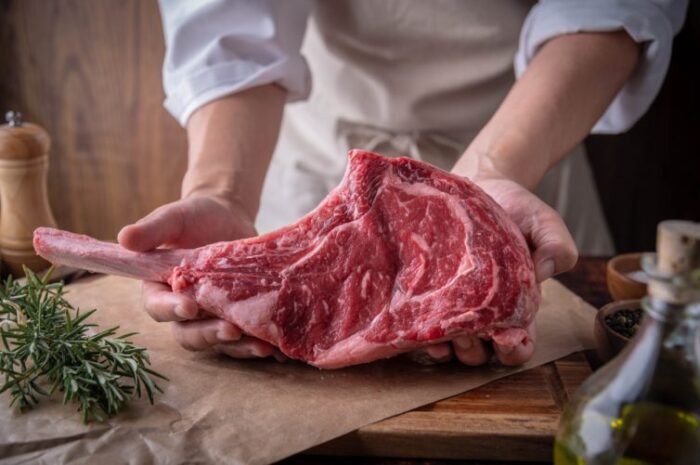
Don’t shy away from using your sense of smell when selecting pork. High-quality, fresh pork has a mild, almost non-existent smell. An unusual or offensive odor is a clear red flag, suggesting that the meat may be spoiled or of poor quality. Note that an ‘off’ smell can’t be masked by cooking and could even pose health risks.
Subtler scent cues also play a role. Some high-quality cuts might carry a slightly sweet or nutty aroma, particularly if the meat is from heritage breeds or pigs that were pasture-raised. This subtle scent can hint towards the flavorful, delectable experience that awaits upon cooking.
Checking for Firmness and Elasticity
Feeling the meat is another integral step when selecting. The meat should feel firm to the touch, not soft or flabby. A firm texture indicates that the meat is fresh and has been handled and stored correctly. It’s essential to note, however, that different cuts of pork might feel slightly different due to their varying fat and muscle content.
Elasticity is equally important. When you press the meat, it should bounce back quickly. If it remains indented or feels spongy, that’s a warning sign. High-quality pork should always exhibit a certain level of springiness, showcasing its freshness and proper storage conditions.
Assessing Packaging and Labels
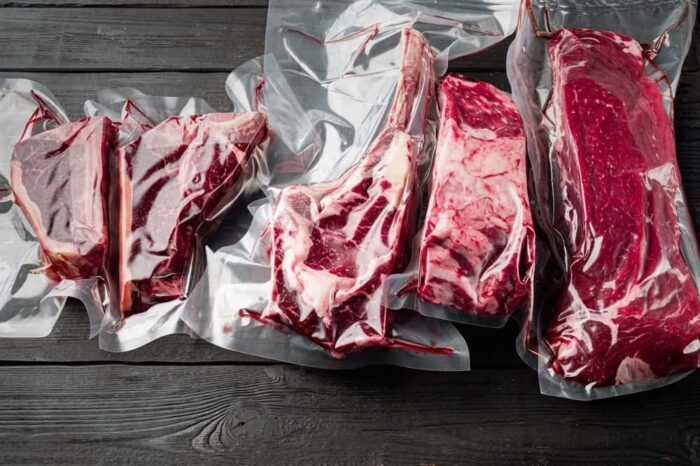
Not only the meat but the packaging too can provide valuable clues. A secure, undamaged package is a must for ensuring the pork’s quality. Beware of packages that are torn, leaking, or have an excessive buildup of frost or ice crystals. These signs may point to multiple freezing and thawing cycles, which greatly compromises the meat’s quality.
Labels on the package deserve your attention as well. They can provide information about the pork’s source, processing methods, and even the diet of the pig. Terms like ‘antibiotic-free,’ ‘no added hormones,’ or ‘pasture-raised’ often indicate a higher standard of animal welfare, which can positively influence the quality.
Sourcing High-Quality Products
While supermarkets and grocery stores offer convenience, sourcing pork from trusted local butchers or farmers’ markets often results in better-quality meat. These places often source their meat from local farms, where the pigs are raised under good conditions, which can greatly impact the quality of the pork. Moreover, knowledgeable butchers can provide insights about the different cuts, helping you choose based on your cooking needs.
Direct-to-consumer delivery services are also worth considering, as many of these services work with small, ethical farms, delivering high-quality, responsibly-raised meat right to your doorstep. The key here is to do a bit of research—look for providers with good reviews and transparent sourcing practices.
Understanding Certification and Grading Systems
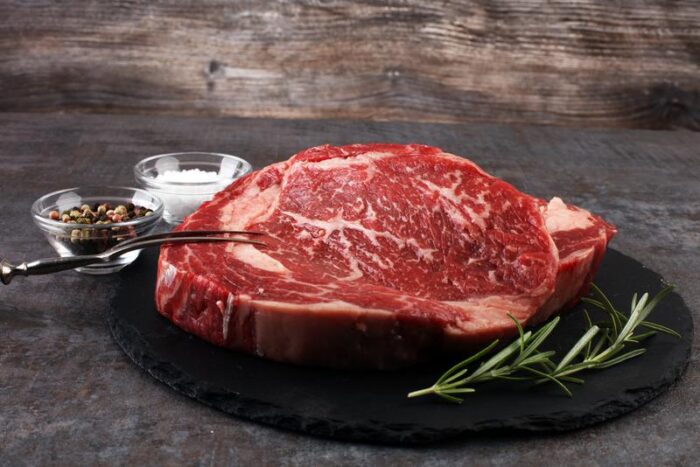
Certification and grading systems are valuable tools for those aiming to select high-quality pork. Some certifications to look out for include Certified Humane, Animal Welfare Approved, and Global Animal Partnership, among others. These certifications signal adherence to rigorous animal welfare standards, which often translates into superior meat quality.
While pork in the United States doesn’t have a formal grading system like beef, some producers and retailers may use their internal quality standards. Learning about these can provide extra assurance about the quality of the pork you’re buying. It’s also worth noting that pork from heritage breeds, though often pricier, is generally of higher quality due to the breeds’ genetic traits and the careful rearing practices employed.
Final Words
Selecting high-quality pork is truly an art—one that requires a keen eye, a discerning touch, and a sensitive nose. Equipped with the knowledge from this guide, you’re now ready to navigate your way through the world of pork with confidence. Remember, the quality of your meat impacts not only your meals’ taste and texture but also your health. Thus, investing time and thought into the selection process is indeed a worthwhile endeavor. Happy shopping, and even happier cooking!








